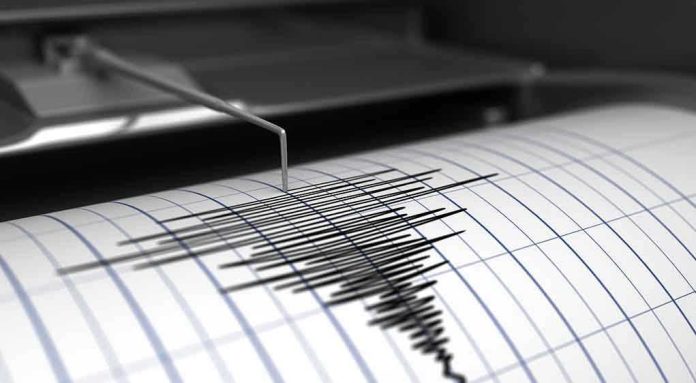
A recent earthquake in the San Francisco Bay Area serves as a stark reminder of the persistent seismic risks facing this densely populated region.
Story Snapshot
- A magnitude 4.3 earthquake jolted the San Francisco Bay Area early Monday.
- The quake was widely felt, although no major damage was reported.
- Local authorities and residents are urged to remain vigilant for aftershocks.
- Experts emphasize the ongoing need for earthquake preparedness.
Seismic Activity in the Bay Area
The San Francisco Bay Area, situated atop the San Andreas Fault System, experienced a magnitude 4.3 earthquake early Monday morning. The United States Geological Survey (USGS) reported the event, which was felt across multiple counties. Although the quake was moderate in magnitude, its shallow depth and proximity to populated areas amplified its impact, waking many residents abruptly.
This event underscores the ongoing seismic risk inherent to the region, which has historically experienced significant earthquakes, such as the 1906 San Francisco earthquake and the 1989 Loma Prieta earthquake.
4.3 magnitude earthquake jolts the San Francisco Bay Area and people report feeling a sharp shake https://t.co/Zku3gLaTz4
— Texoma's Homepage (@TexomasHomepage) September 22, 2025
Response and Preparedness
Following the earthquake, the California Office of Emergency Services (Cal OES) and local authorities swiftly began assessments. No major damage or injuries were reported, but the incident has reignited discussions about preparedness and infrastructure resilience. Residents have been advised to review and update their emergency plans and supplies, as even moderate quakes can serve as precursors to larger seismic events.
The Bay Area’s preparedness initiatives, such as the Bay Area Earthquake Plan (BAEP), are crucial in coordinating responses and minimizing potential damage. These efforts highlight the importance of public education, seismic retrofitting, and policy updates to ensure community safety.
Impact and Expert Analysis
While the immediate impact of the quake was limited, experts stress the importance of remaining vigilant. Seismologists from the UC Berkeley Seismology Lab and other institutions continue to emphasize the likelihood of larger earthquakes in the future, advocating for consistent preparedness measures. They assert that such moderate events should not lead to complacency but rather reinforce the need for ongoing vigilance and readiness.
In addition to raising public awareness, the earthquake may prompt renewed interest in seismic retrofitting and insurance coverage. The construction and insurance industries are likely to see increased demand as residents and businesses seek to protect their properties from future seismic events.
Overall, this recent earthquake serves as a reminder of the Bay Area’s volatile tectonic environment and the critical need for comprehensive preparedness strategies. Collaboration among federal, state, and local agencies, along with informed community engagement, remains essential in mitigating the risks associated with future seismic activity.
Sources:
Cal OES Bay Area Earthquake Plan Fact Sheet
SF.gov Earthquake Preparedness
UC Berkeley Seismology Lab: Be Prepared
Cal OES Earthquake Preparedness and Mitigation Programs










